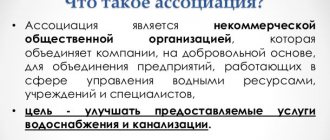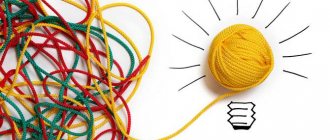The method of connected associations is a powerful tool for memorizing to-do lists, things, etc. Mastering this method gives a very big starting breakthrough in the development of memory.
To remember a series of words using the method of coherent associations, you will need some already memorized series of words. It will become the base. You can come up with your own series or take this one:
House, tomato, soap, notebook, sun, mouse, tangerine, box, hole, fire.
You must connect each word of the learned series with a word of the new series (the first with the first, the second with the second, and so on). This method allows you to save your time and effort, since you do not have to memorize the series again.
You can connect words with each other like this, for example: tree and sun. The sun is shining, and the tree is reaching towards the sun. Or sour cream and cat. The cat licks the sour cream on the table.
Since you know the basic series of words by heart very well, it will not be at all difficult for you to reproduce new words in the correct sequence, using associations.
For example, given a series of words:
Grass, cucumber, pineapple, black man, window, envelope, chair, bottle, apartment, door.
Now, using the learned series of words, in our case it will be “house, tomato, soap, notebook, sun, mouse, tangerine, box, hole, fire,” let’s depict the method in action.
Let's connect the word grass with the corresponding word - house. Emerald grass grows in front of the house. Next are cucumber and tomato. The recipe for summer salad is simple: cucumber + tomato. We can use a bunch of soap with the scent of pineapple, or you can: pineapple, before serving, was washed with soap. The black man makes notes in a notebook. The sun is blinding through the window. The mouse chewed through the envelope. The mandarin crashed into a chair. Box filled with bottles. Nora is a mouse's apartment. The door is all on fire.
Now try playing the new list in order. How many words did you name correctly? This exercise is excellent training for memory and brain development in general.
This method can be used to remember ordinary things in everyday life. Can be used to remember a list of products that you should buy in stores. If the list is very large, then memorizing in this way will be very useful for developing your memory and association.
Introduction
Have you decided to study mnemonics? First, let's try to figure out what kind of science this is. If we turn to the encyclopedia, we get the following definition: Mnemonics (or mnemonics) - from the Greek. mnemonikon - the art of memorization, means a set of techniques and methods that facilitate memorization and increase memory capacity through the formation of artificial associations. In simple terms, these are special techniques for memorizing new information, which in turn is encoded into an image and linked through associations to existing information. For example, you and I have all known the 7 colors of the rainbow and their sequence since childhood. Remember the famous memory stick?
Every hunter wants to know where the pheasant is going This remembered almost the first time, since it is just one sentence . From the first letters we can easily remember the main colors of the rainbow: Red , Orange , Yellow , Green , Blue , Blue , Violet .
In general, mnemonic techniques are good for remembering accurate information. Therefore, the more complex the information from the point of view of normal memory, the easier it is to remember using mnemonic methods. Let's see which sequence of numbers is easy to remember: 830948362 or 123456789 or 194119454? Probably the one with which you have associations: counting in order (123...), a memorable date (1941-1945) or a favorite number, birthday, your car number, etc.
The main “secret” of mnemonics is very simple and well known. When a person connects several visual images in his imagination, the brain records this relationship. And later, when recalling one of the images of this association, the brain reproduces all previously connected images. Thus, using this mechanism, you can remember a telephone number, a historical date, or an entire chronological table. Possession of mnemonics skills allows mnemonists (people who professionally engage in mnemonics) to memorize huge sequences of numbers. For example, 20,000 decimal places of Pi (3.141592653589793238...)
Let us give you some real examples of phenomenal memory. Thus, a 26-year-old Chinese telephone operator from Harbin remembered 15,000 telephone numbers from 10 cities in China.
Dominic O'Brien from Great Britain memorized the sequence of cards in 40 different decks and made only one mistake. Moreover, each card was shown to him only once. He set the record on November 26, 1993 at the BBC studio in Elstree (UK). On March 25, 1994, at the presentation of the Guinness World Records, Dominic memorized a sequence of cards in one deck in 43.59 seconds (demonstrating a memorization speed of 0.84 seconds per card).
Twenty-three-year-old Indian S. Mahedevan, a psychology student from Mangalore, set a world memory record in memorizing digital information. In three hours and thirty-nine minutes, he memorized and repeated 31,811 numbers by heart. The previous record was 28,013 digits in 9 hours and 14 minutes. If we assume that the memorization of numbers was carried out on the basis of dividing a series into three-digit numbers-images, then in the first case the speed of memorization was 1.2 seconds, and in the second - 3.6 seconds per visual image, in which three numbers are encoded at once.
What is striking about these records is the high speed of memorization, i.e. the average time spent on memorizing one unit of information. Each number, when memorized, has its own image, defined by them once and for all, for example: 1 - hedgehog, 2 - poison, 3 - ear, 4 - check, 5 - nickel, etc. When you need to remember a sequence of numbers: 51342. Mnemonists instantly translate it into images: nickel-hedgehog-ear-check-poison, They associate it into an association: a hedgehog is depicted on the nickel, the hedgehog has a big ear, a check sticks out of the ear, the check is saturated with poison and remember it . The fact is that it is much more convenient and easier for consciousness to work with images than with abstract symbols and numbers.
Let's try to work with one of the mnemonic methods - “chain”. This method works this way: images are associated in pairs. In each pair, the images should be approximately the same size. You form a connection between the first and second image, and then remove the first image from consciousness by transferring attention to the second. After this, a relationship is formed between the second and third image, etc.
Let’s look at the “chain” method using an example: book - chair - window - light bulb, take the 1st and 2nd images and connect them into an association (the book lies on the chair). Then the 2nd and 3rd images are connected (the chair broke the window) and the 3rd and 4th (the light bulb is on in the window)
CLEAR DEMONSTRATION OF THE CHAIN METHOD
1) the book is lying on the chair; 2) the chair broke the window; 3) a light is on in the window.
Figure 1. Remember using the Chain method: book-chair-window-light bulb (horizontal association)
RECOMMENDATIONS:
— The sizes of the images are approximately the same in each pair. - Always form connections according to a certain system. For example, if the association is horizontal, place the first image on the left (Figure 1); if the association is vertical, place the first image on the top (Figure 2). When recalling, read the images in the same order. — Present the images brightly, colorfully, three-dimensionally. — The connections between images can be fantastic. For example, a chair looks out the window. This helps memorization.
Figure 2. Remember using the Chain method: book-chair-window-light bulb (vertical association)
Let's try to understand why we need mnemonics?
1. If you need to remember a large amount of information, then mnemonics will be useful to you. 2. If you want to be sure of the correctness and accuracy of the memorized material, then you cannot do without mnemonics. 3. If you are already over 25 and something has happened to my memory, then mnemonics will help here too. 4. Finally, mnemonics are a very good exercise for the brain.
Warning!
But, there is one thing. To master mnemonics you will need to train. You need to master a number of techniques and practice them many times. In terms of labor costs, mastering mnemonics can be compared with mastering a foreign language, up to an average or below average level. If you want to try to master mnemonics, then go ahead, we will help you with this, and if not, then we will simply wish you all the best!
Today's task
Keep another row of words to memorize:
Mountain, stone, fireplace, snow, wind, carpet, firecracker, star, earth, cucumber, keyboard, wheel, anchor, sea, bridge, camera, road, plane, rocket, moon, sun, stars.
A good start! I'm glad that we have already completed the first lesson today; the main thing is to set a goal and go towards it. Walk evenly, steadily, step by step, without jerks or long stops. For comparison, a Chukchi can kill a deer with his bare hands: he simply follows it at the same pace until the deer is exhausted and can no longer run.
Lesson taken from the course: Super memory in 30 days
Associations
Any memorization or memorization presupposes the establishment of appropriate neural connections, or associations. Psychologists understand association as a natural connection between individual events, facts, objects or phenomena reflected in consciousness and fixed in memory. If there is an associative connection between mental phenomena. A and B, the emergence in a person’s consciousness of phenomenon A naturally entails the appearance in the consciousness of phenomenon B. There is also a stable phrase “remember by association” enshrined in the language. This means that stimulus A causes a reaction B in the brain. For example, a familiar melody evokes a memory of a movie or the words of a song. Photography evokes memories of past events. Mnemonics uses the same terminology, but the interpretation of concepts differs from those generally accepted in psychology. “Remember by association” - in mnemonics we can say the same thing, but we need to understand this as “remember a connection previously created in the brain.” Moreover, the connection could be created naturally (involuntarily) or the connection could be created specifically, consciously. Let's try to figure it out. Natural association is the automatic fixation of connections between objects in the surrounding world. For example, if we see a vase of flowers on the window, then a natural combination of connected images immediately arises in our heads: WINDOW-VASE-FLOWERS. This connection is remembered by the brain without our conscious participation. For example, when a car is repeatedly perceived, the natural association “car” is retained in the brain. This is an image consisting of several other images: the car body, wheels, hood, roof, steering wheel, trunk, number... Or the image of the “entrance door” consists of several sub-images: the door itself, the peephole, the number plate, the handle, the lock. Natural associations are actively used in mnemonics (Cicero's method, free association method, memorizing photographs and illustrations). An artificial association (or simply an association) is a visual image to which other images are consciously (artificially) attached. In association, they distinguish: the basis of the association (a whole image that includes other images - parts of the whole image) and elements of the association - images associated with parts of the whole image. The brain remembers these images as one picture. You can connect from two to five images simultaneously into an artificial association. Roughly speaking, an artificial association is similar to a Christmas tree with Christmas tree decorations. Where the Christmas tree is the main piece of information (the basis of the association), and Christmas tree decorations (other pieces of information) are elements of the association.
Method of semantic memorization
This type of memorization is based on one of the fundamental laws of memory: in order for information to be preserved, the brain must work on it. And semantic memorization presupposes active mental work on the material. And this, by the way, does not like the method for those who would like to learn how to assimilate complex information easily, without making any effort. It doesn't happen that way. Mastering any activity requires effort, and mnemonic is no exception.
Semantic techniques relate primarily to memorizing text. They are largely individual and depend both on the characteristics of a person’s thinking and on the nature of the material that needs to be remembered. But there are a few general rules that should be followed:
- Remember that you need the information you want to remember. Convince yourself of this. Nothing interferes with the acquisition of knowledge more than the belief that it is useless.
- Try to understand and comprehend the text. If the presentation is too complex, then, while reading, “translate” it into a language more convenient for you.
- Do not cling to individual words, phrases, formulations. Focus on remembering the meaning, and this is impossible without understanding.
- Highlight the main thoughts and don’t be lazy to draw up a plan. It will help you comprehend the text and sort out the main semantic units. Maintain a logical sequence when moving from point to point; awareness of the connections between points reduces the amount of time for memorization.
- Supplement your main ideas with examples; they are always remembered better than dry theoretical formulations. If there are not enough examples in the text, come up with them yourself. Use your experience, information from books, films, and professional activities.
- Ask questions, they perfectly activate thinking and help in understanding complex material. Reason, argue with the author and with yourself. Imagine an invisible interlocutor and discuss the most controversial issues with him.
- Always take notes. Firstly, this will allow you to focus on the main thing, because you will not write down everything, but only the essential ones. Second, writing in a more organized and linear manner will allow you to organize and organize the information you remember. Thirdly, writing also connects motor memory to semantic memory, which significantly increases the efficiency of memorization.
Some may find these tips too complicated. But if you form the habit of working with any text in this way, then everything will be remembered easily and simply, and it will take a little time. At least less than reading the same text three times. And the efficiency of storing information will be much higher.
Do not forget that semantic memorization requires well-developed, free speech and a decent vocabulary. But you will also develop this quality if you follow the tips on organizing semantic memorization.
The main operation with associations is connecting images.
We imitate the natural process of perception followed by memorization and in our imagination we can combine several images. The brain then remembers the relationship between them. And then from one of these images he can recreate the entire picture. The operation “connecting images” is a kind of switch for the memorization mechanism.
In this case, it is necessary to form THREE SEPARATE CONNECTIONS. To do this, the necessary images are connected in the imagination and held together for about 3-6 seconds.
Stages of mastering the technique
Development is carried out in four stages:
1.
encoding – abstract data is collected;
2. combining images - a connection is established between unrelated initial components;
3. memorizing a sequence - repetition in any convenient form, decoding abstract data;
4. direction to “long-term” memory and reproduction if necessary.
This sequence helps to process any amount of input data
With the help of mnemonics, you can remember a vast amount of information and develop “super memory”. Training can begin at any age, the result depends only on the amount of time spent on mastering the technique and the efforts made.
Rules for the formation of associations
There are several basic rules for accurately forming associations. Let's look at them: 1. Imagine visual images clear and concrete in space at a distance of about one meter from you. It doesn’t matter whether your eyes are open or closed. But most experienced mnemonists prefer to form associations with their eyes open, focusing their gaze on a plain, smooth surface. 2. Visualize visual images in a fairly large size so that you can reduce them (remove them) and enlarge them (zoom them closer). 3. Connect visual images so that they can be outlined with a solid continuous line in a circle. That is, all images in the association must be in contact with each other. 4. Form an association so that all visual images are clearly visible to you. You cannot hide images within each other or one after another. 5. When you create an association, your visual images may be in motion. But after you have connected them, stop (fix) the picture and focus your attention on it. 6. The visual images you create can have a different character (be sad or happy, good or evil). In fact, this does not affect the memorization process, but the “brighter” the character of the image, the better. 7. To facilitate the process of connecting images, you can adjust them to each other in different ways (rotate, twist, zoom in, move out).
Associative series in psychology
The associative series method is used in different psychological schools and directions: NLP, Gestalt psychology, art therapy, psychoanalysis. As you can see, not a single psychologist can do without associations.
A direction such as NLP (neuro-linguistic programming) uses the method of associations to consolidate some important skills or processes. For example, there is the “anchor” technique. It is used to commit something important to memory.
For example, you want to earn a certain amount for a new car. This goal energizes you and doesn’t let you go. In order to help the brain “tune in” to the desired goal, the anchoring method includes associations. You need to imagine that you have already achieved your goal and are driving the car of your dreams. Imagine vividly and in detail what you feel at this moment, do you think? What is happening around you: what does a new car interior smell like, what music is playing, or maybe you are driving past the embankment? What smells and sounds surround you? What pictures, images do you imagine when you think about your dream?
Having described in detail your dream in real embodiment, highlight the main accents in this picture. And come up with “anchors” for them. Perhaps these will be some symbols that you draw on a small piece of paper and put everywhere: in your wallet, in your desk, even on the refrigerator shelf. It is important that your gaze unexpectedly stumbles upon an anchor associated with your dream. Thus, the brain will constantly receive a signal associated with the goal. This will allow even unconscious mechanisms to pave the way for the dream.
You can use drawn symbols, small objects, anything as an anchor, the main thing is that it should remind you of your goal.
An association can be formed in three main ways.
Highlighting the basis of the association. One image in the association is chosen as central and is mentally imagined as larger; other association images are connected to different parts of this central image (memorization for different parts of the image). While maintaining the sequence of images in the association. The images included in the association are connected sequentially in pairs according to a certain system. For example, from left to right or from top to bottom, as we usually write. In this case, all images are grouped near the first image so that the entire association is visible entirely and simultaneously. Arbitrarily. All images of association are approximately equal to each other and are connected arbitrarily, without a specific system. The main thing when forming an associative connection is to mentally imagine all the images of the association at the same time.
Examples of forming an associative connection Imagine a candle. Pierce it with a pencil. Insert the needle into the pencil. Tie a string to the knitting needle. Tie a weight to a string. Place a butterfly on the weight. Make sure that all the images are arranged closely around the first image (candle). After creating paired relationships, try to see the entire association.
Basic mnemonic devices:
The applied arsenal of modern mnemonics consists of a large set of unified memorization techniques. Among the main mnemonic techniques and methods are the following:
- Letter code. Formation of semantic phrases from the initial (or purposefully assigned) letters of memorized information.
- Associations. Finding vivid, unusual associations that connect to memorized information.
- Rhymes. Creating rhyming pairs of words or even short poems containing memorized material.
- Consonance. Memorizing terms or foreign words using consonant already known words or phrases.
- Roman room method. Assigning memorized objects to specific locations in a room you know well.
In this lesson, for ease of learning, all mnemonics will be divided into groups depending on the type of information that these mnemonics help to remember.
Mental operations with images
The main techniques of mnemonics are based on visualization of memorized information. When reading, in order to remember the entire text, try to translate each word into a picture in your imagination. Using mental actions, try to examine the resulting image from all sides. For example, imagine a book. Mentally turn it over to the other side. Consider what color it is and its thickness. In this lesson we will practice various mental operations. Your task will be to memorize the images in pairs, using these same operations. During this lesson, you will have to not only imagine what you need to remember, but also modify these images. We have already mastered one of the mental operations in the previous lesson - this is the connection of images. This is a process during which we mentally connect several images in our imagination, and our brain remembers the relationships between them. And then, based on one of the remembered images, we build the entire association.
The next mental operation that we will analyze is increasing - reducing the size of images. Let's imagine a small image and mentally delete it. Now, if you start to enlarge this image, then you can read the previously formed relationships from it. This mental operation is easy to use when forming associations with different parts of one image. We concentrate our attention on some sub-image, then this sub-image increases and occupies the entire internal space of consciousness. Other parts of the image and association are thereby repressed. In simple terms, you need to take a more complex image and place a simpler one there. A complex image can be reduced if necessary. For example, imagine a thermometer, examine it in detail: divisions, numbers, mercury column. We increase the mercury column and you can hang a bucket on it. Then roll all the small parts back to normal size.
Another mental operation is the selection of a subimage . To begin with, from the main image you must select the most typical sub-image for it and do the rest of the work with it. For example, it is easier to remember the image of a wrench than the image of a car mechanic. Simplified images can be linked together, thereby forming simple, compact and informative relationships. Transformation of images is another mental operation. Imaginary objects can also be transformed. Thicken, lengthen. Add different details. This is necessary so that they can be reused. But the main condition is that the images should be transformed so that the subject does not change its meaning. For example, if we transform the image of a pencil, then it must always remain a pencil: thin or thick, long or short, curved or straight, colored or simple, but still a pencil.
Modification of images. Let's imagine different images with the same name: “car” “Zhiguli”, “Mercedes “Zaporozhets”, toy car, money counting machine, snowblower, etc. Modification of images, as well as transformation, is used to create a variety of visual representations. They differ only in that here, when memorizing, the mental operation “Modification of images” has priority. When all possible types of images are used in the process of memorization, they can be transformed. A very interesting mental operation is the rotation of images . Mentally rotating the imagined image, we can see it from different sides and read various associations from it. Thus, with mental rotation, many other images can be written on one image. For example, by mentally rotating the image of a radio receiver, you can form various associations with parts of this receiver. Simply rotating images in your mind is a good exercise. Overlaying images. Images are mentally superimposed on each other without connecting them (one image seems to be further away, the other is closer). Allows you to remember weak relationships that are difficult to remember. The same mental operation is used to form relationships between the representations of different analytical systems, for example, when fixing new foreign words in memory. In this case, the visual image is superimposed not on another visual image, but on the sound of the memorized word. The superposition of images allows you to establish a direct relationship between the image and an arbitrary sign or number (learning figurative codes, signs and symbols).
Other development courses
Speed reading in 30 days
Increase your reading speed by 2-3 times in 30 days. From 150-200 to 300-600 words per minute or from 400 to 800-1200 words per minute. The course uses traditional exercises for developing speed reading, techniques that speed up brain function, methods for progressively increasing reading speed, exercises for memorizing what has been read, the psychology of speed reading and the questions of course participants are discussed. Suitable for children and adults reading up to 5000 words per minute.
Sign up for a courseFree lesson
Verbal counting
Learn to quickly and correctly add, subtract, multiply, divide, square numbers, and even extract roots. I will teach you how to use easy techniques to simplify arithmetic operations. Each lesson contains new techniques, clear examples and useful tasks.
Sign up for a courseRead more
Development of memory and attention in a child 5-10 years old
The purpose of the course: to develop the child’s memory and attention so that it is easier for him to study at school, so that he can remember better.
After completing the course, the child will be able to:
- 2-5 times better to remember texts, faces, numbers, words
- Learn to remember for a longer period of time
- The speed of recalling the necessary information will increase
Sign up for a courseRead more
Four stages of memorization
To make it easier to remember information, let’s try to break this process down into stages. The first stage is encoding into images. For information to be remembered in the visual system, any information stored must be converted into simple visual representations. The next stage is connecting the images. That is, after we have converted elements of information into visual images, we need to connect them into an artificial association. In our imagination, we can connect several visual images together, and the brain remembers the relationship between them. In the future, any of these images will recall the entire association as a whole.
At the third stage, we need to remember the sequence of the association and imagine it in its entirety. So, in our example, after the sequential creation of three connections, it is necessary to imagine the entire association. It contains DIRECTLY related images that denote parts of the information message. Please note that the formation of an association is a direct recording of information (connections) into the brain. And the final, fourth stage of remembering the association is consolidation in memory. It is carried out by repeated mental repetition. The nature of memory is such that the created associations (relationships) are spontaneously destroyed after about 40-60 minutes, subject to a single perception. The duration of storing information in memory depends on the frequency of its activation
*In preparing the article, materials from the mnemonikon website by V. Kozarenko were used
Super memory in 30 days
Remember the necessary information quickly and for a long time. Do light and simple exercises to train your memory little by little throughout the day. Train your memory with dozens of exercises that will be useful in everyday life.
Sign up for a courseRead more
How to improve memory and develop attention
Free practical lesson from advance.
Sign up for freeRead more
Synectics is a form of searching for new ideas using analogies.
Published: 03/04/2018
Synectics is a form of searching for new ideas through the construction of analogies. Author - W. Gordon (USA, 1952). Synectics is an advanced brainstorming method based on the principle of “making the known strange and the strange known.” The synectics method, like other methods of associative search for ideas, is based on the ability of the human brain to establish connections between words, concepts, feelings, thoughts,...
no comments yet
Examples of using associations and metaphors in advertising
Audiobooks
Wild, wild Raid. Idea of Stanislav Stroganov and Alexander Ilyin
Doesn't matter?! Garbage has a home
Brainstorm. The essence of the method and rules of organization
Published: 02/14/2018
Brainstorming is a method of searching for ideas that was proposed by Alex Osborne (USA) in the 40s. XX century The goal of brainstorming is to generate as many different ideas as possible. The essence of the method is to teach participants not to be afraid of fantastic ideas: they are easier to “tame” than to come up with. This method awakens tired imaginations. The main provisions of the method: collective search for ideas, separation...
no comments yet










